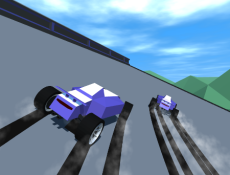

Driving games represent a category of interactive entertainment focused on vehicles, speed, and control. Unlike racing titles that emphasize competition, driving games can also explore open environments, traffic systems, or transport missions. This flexibility allows the category to cover both casual and highly technical experiences, giving players a wide range of approaches to handling vehicles in virtual spaces.
Core Design
The structure of driving games is built around the mechanics of movement and steering. Physics systems, camera perspectives, and control schemes define how realistic or arcade-like the driving feels. Some games replicate real-world conditions, while others simplify controls for accessibility. The balance between realism and fun creates subcategories that appeal to different audiences.
Types Of Driving Games
Driving games are diverse, covering many playstyles and goals. While speed is a common theme, many titles use vehicles as a tool for broader challenges rather than competition alone.
Common types include:
- Simulation-based experiences with realistic physics
- Open-world exploration with cars as the main tool of movement
- Mission-driven designs focusing on transport or delivery
- Traffic management games with controlled driving rules
- Casual driving experiences for relaxed play
Player Experience
The attraction of driving games lies in the balance between freedom and challenge. In open settings, players can enjoy the exploration aspect, navigating cities or landscapes at their own pace. In structured missions, the emphasis shifts toward precision and timing. Some games even combine these approaches, allowing players to choose between competitive races, free exploration, or practical driving tasks. The category’s adaptability is one reason for its lasting popularity across generations of players.
Driving games continue to evolve by incorporating new technologies and design trends. Virtual reality has expanded immersion, while online modes allow for cooperative or competitive play. From realistic simulations to simple driving loops, the category covers a broad spectrum, making it one of the most versatile in gaming. Its enduring relevance shows how vehicle control and movement remain engaging, whether used for competition, exploration, or structured missions.















